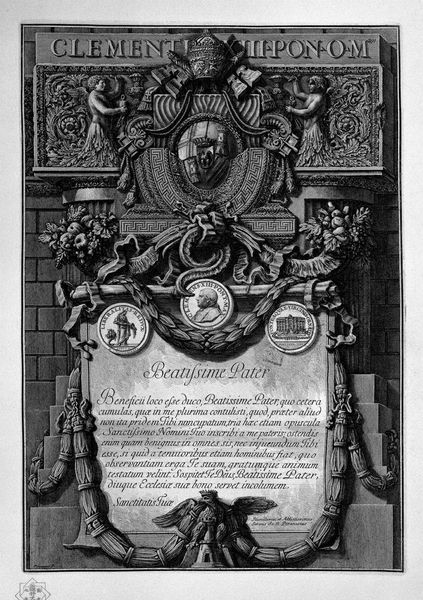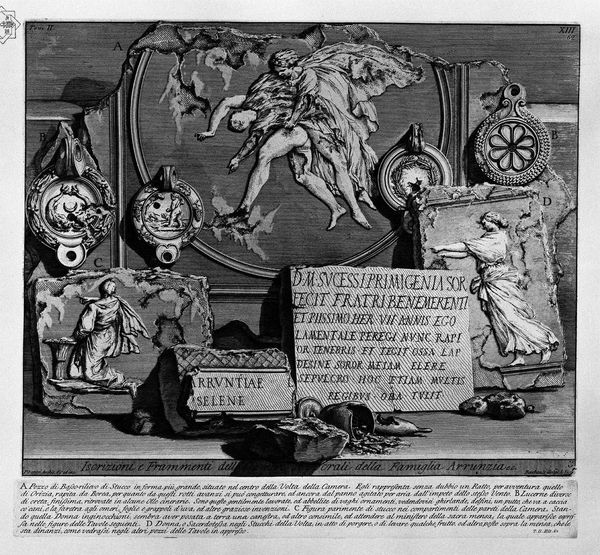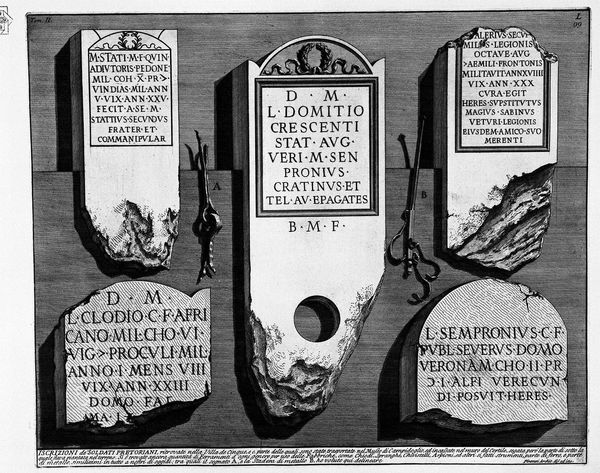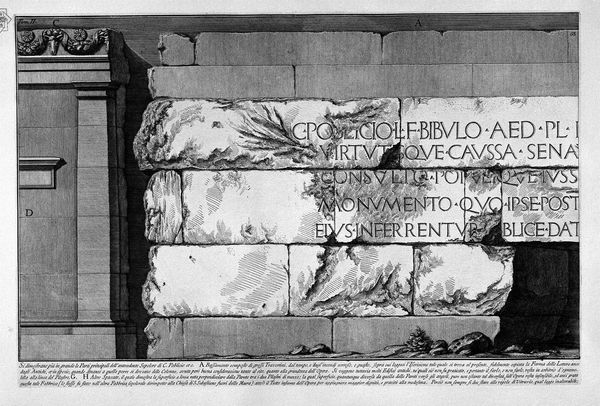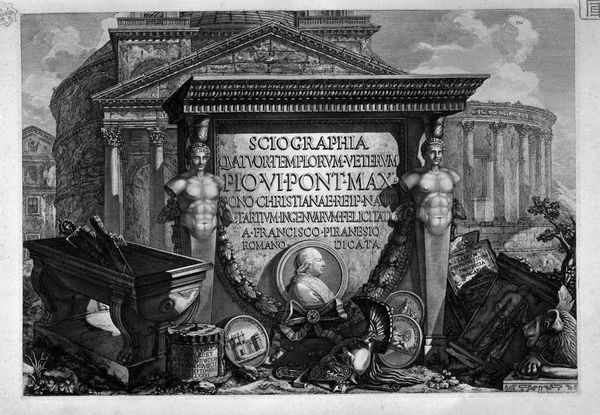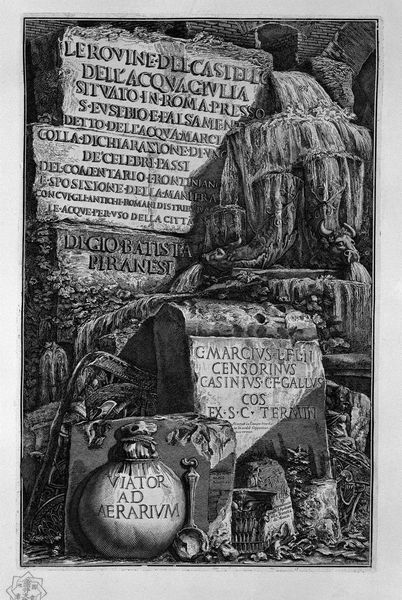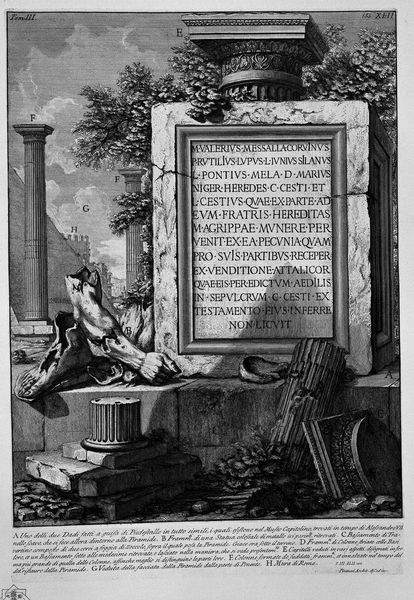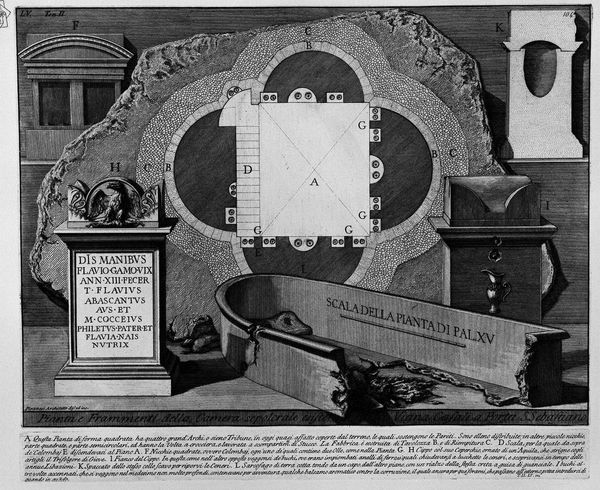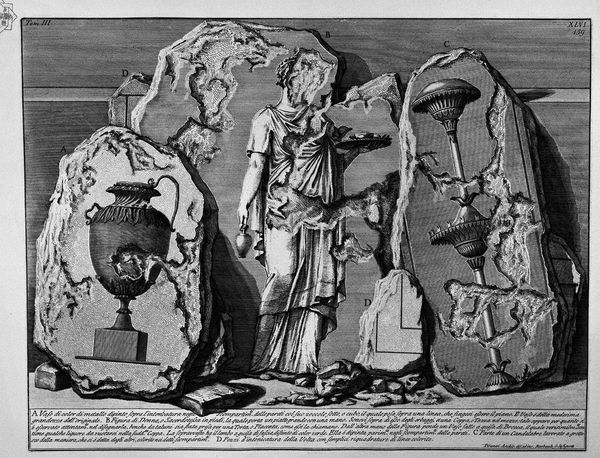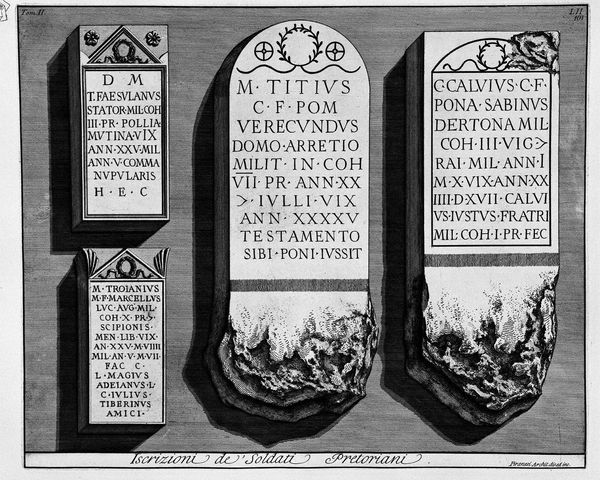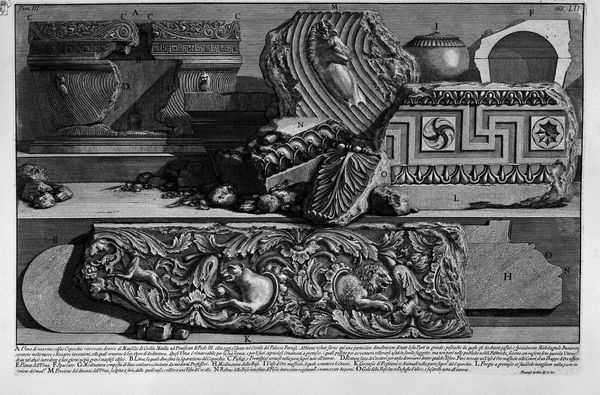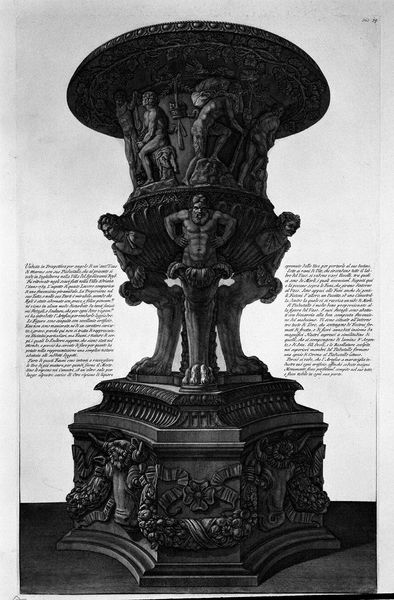
The Roman antiquities, t. 2, Plate LXIII. Remains of the Mausoleum of Augustus.
0:00
0:00
drawing, print, etching, photography
#
drawing
# print
#
etching
#
landscape
#
classical-realism
#
photography
#
ancient-mediterranean
#
black and white
#
arch
#
history-painting
Copyright: Public domain
Curator: Giovanni Battista Piranesi's print, titled "The Roman Antiquities, t. 2, Plate LXIII. Remains of the Mausoleum of Augustus," presents a striking image of fragmented grandeur. What's your initial response to it? Editor: Somber and monumental. There's a deep melancholy emanating from these decaying blocks and crumbling facades. I'm immediately struck by the scale and weight of the stone—you can almost feel its texture and coolness. Curator: Exactly. Piranesi, working primarily in etching, demonstrates a remarkable ability to convey the tangible materiality of these ancient ruins. Consider the deep lines creating shadow and form; you get a real sense of the physical labor involved in both building these structures and, centuries later, in unearthing them and re-presenting them through printmaking. Editor: That resonates powerfully. This isn’t just about representing architectural forms, is it? The ruins become potent symbols of power, loss, and the inevitable passage of time. What were the original power structures and belief systems that underlay such constructions, and what does their deterioration signal about societal shifts? Curator: Certainly, and it also raises questions about cultural consumption and the evolving perception of history. Piranesi wasn’t merely documenting; he was creating a romanticized vision of the past, likely influencing contemporary architectural tastes and understandings of Roman imperial ambition. The details, the craft—these invite reflection. Editor: The inscription "OSSA AGRIPPINAEMAGRIPPA" grabs my attention too— a chillingly direct acknowledgement of the earthly remains housed within. The layers of marginalization in Roman imperial society related to women like Agrippina, as mothers and partners to powerful men—that relationship is frozen here, even if incomplete and crumbling. Curator: Precisely, it’s a physical manifestation of fragmented memory and selectively recorded history. Piranesi compels us to acknowledge not just the monumentality of Rome but also the laborious processes of its material production and the often unequal social hierarchies that shaped its culture. Editor: Yes, by centering our discussion on what he selected to document and the ways in which he chose to depict them, we get a sense of the relationship between artistic practice, socio-cultural narratives, and labor history. A compelling image, indeed. Curator: Indeed. It's been a fascinating exercise examining this plate from "The Roman Antiquities".
Comments
No comments
Be the first to comment and join the conversation on the ultimate creative platform.
